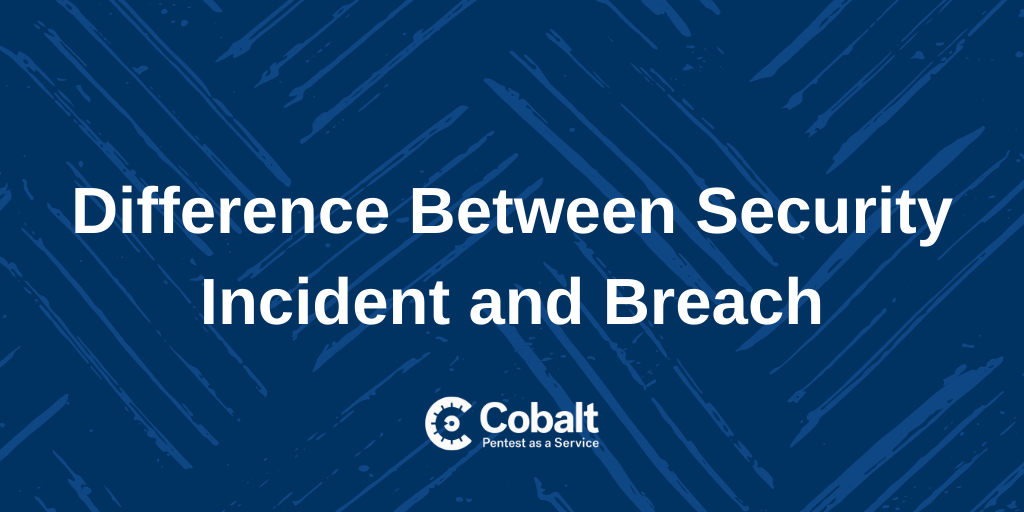Reports of cyber attacks, online breaches, and hacks occur more and more frequently. With this disturbing trend on the rise, companies have more reasons than ever to approach security proactively.
Yet, setting up a proactive security plan is challenging to say the least. However, that shouldn’t stop small businesses from taking on the task. The cost of neglecting security grows by the day. Plus, with companies such as Cobalt and many Security as a Service providers -- it is more realistic than ever to prioritize a security plan for your company.
By understanding the basics, such as the difference between a security breach and the incidents that cause them, companies can better understand general best practices for protecting their information and improving their security posture.
What is the difference between a security incident versus a security breach?
A security incident and breach, while closely related, are distinct security terms.
A security incident refers to a violation of a company’s security policy. On the other hand, a security breach is when an unauthorized actor gains access to data, applications, network, or devices which results in information being stolen or leaked.
Often, incidents and breaches go hand-in-hand, with most breaches occurring after an incident.
Preventing this transition is often critical to the success of a security plan. Practically, it makes sense that companies with multiple layers of defense in place to slow down or stop attackers will have a stronger security posture. Learn more about this topic and how to implement multiple layers of security defense with insights from Cobalt’s CISO on The Humans of InfoSec Podcast.
The difference between a security breach and incident is best highlighted by an example:
Imagine attackers attempting to access a network through malware. The presence of malware doesn’t mean a breach occurred. It’d be referred to as an incident until the attackers inflict damage, steal data, or conduct actual malicious behavior. In this example, the moment the attackers successfully damage systems or steal information using the malware is when it becomes a security breach.
Companies should develop a detailed plan to respond, with a focus on detecting incidents and stopping them before they evolve into more serious breaches. Read more about the importance of establishing a security perimeter or explore the details of a compromise incident assessment.
What should you do to prevent a security breach?
Best practices for responding to a security breach often rest upon a company’s security plan (which is why you should have one! See above).
Many small businesses still struggle to find the time or resources to actually build a proper security plan. Despite the high demand for security talent, companies have many options to properly create a security policy, including relying on external specialists.
At a high level, when responding to a security breach, it’s critical to act quickly. Of course, the best response to a breach is one that never happens though. Preventing a breach is often enhanced with endpoint security, proper training, security policies, and manual penetration testing such as services offered on Cobalt’s PtaaS platform.
To learn more about how Cobalt helps companies improve their security posture, read more about how security teams benefit from using an innovative PtaaS Platform.

















-1.png)


